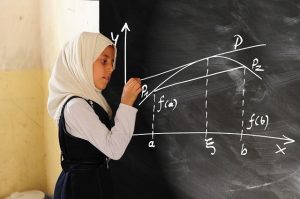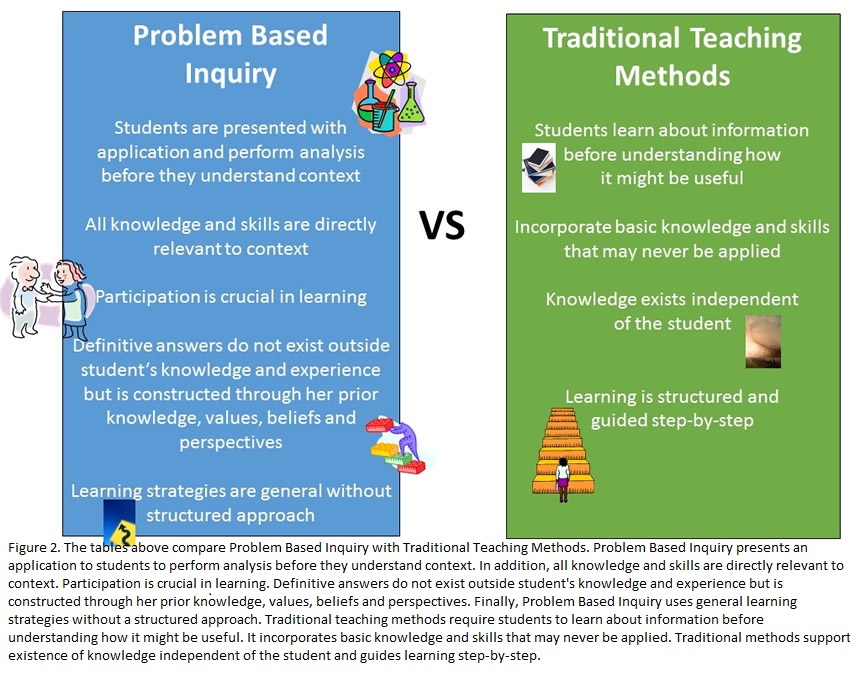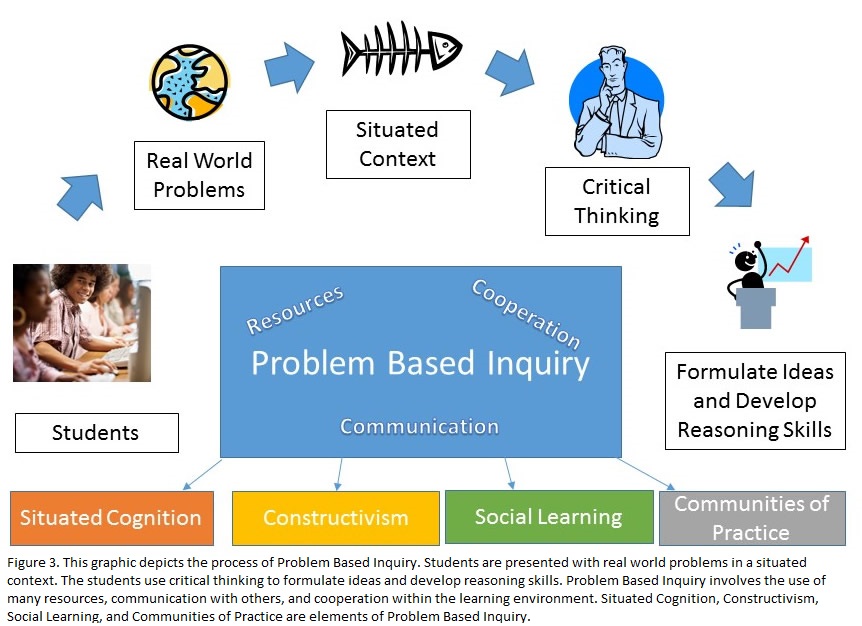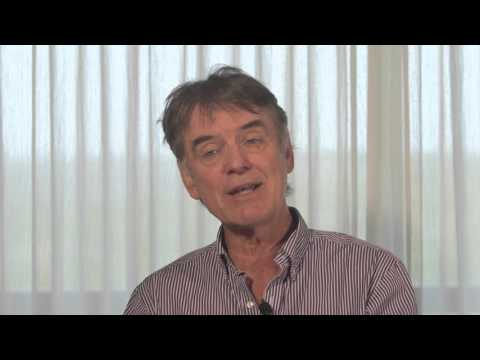Evan Glazer (University of Georgia)
Problem Based Learning is a teaching methodology.
Description
-
Problem-based inquiry is an effort to challenge students to address real-world problems and resolve realistic dilemmas.
Why should we use problem-based inquiry to help students learn?
If an unfriendly foreign power had attempted to impose on America the mediocre educational performance that exists today, we might well have viewed it as an act of war. We have, in effect, been committing an act of unthinking, unilateral educational disarmament. (A Nation at Risk, 1983)
What is a framework for a problem-based inquiry?
Characteristics
Activity is grounded in a general question about a problem that has multiple possible answers and methods for addressing the question. Each problem has a general question that guides the overall task followed by ill-structured problems or questions that are generated throughout the problem-solving process. That is, to address the larger question, students must derive and investigate smaller problems or questions that relate to the findings and implications of the broader goal. The problems or questions thus created are most likely new to the students and lack known definitive methods or answers that have been predetermined by the teacher.
Learning is student-centered; the teacher acts as facilitator. In essence, the teacher creates an environment where students take ownership in the direction and content of their learning.
Students work collaboratively towards addressing the general question. All of the students work together to attain the shared goal of producing a solution to the problem. Consequently, the groups co-depend on each other’s performance and contributions in order to make their own advances in reasoning toward answering the research questions and the overall problem.
Learning is driven by the context of the problem and is not bound by an established curriculum. In this environment, students determine what and how much they need to learn in order to accomplish a specific task. Consequently, acquired information and learned concepts and strategies are tied directly to the context of the learning situation. Learning is not confined to a preset curriculum. Creation of a final product is not a necessary requirement of all problem-based inquiry models.
Instructional models and applications
-
There is no single method for designing problem-based inquiry learning environments.
Problem-Based Learning
-
Problem-based learning (PBL) is an instructional strategy in which students actively resolve complex problems in realistic situations.
Designing the learning environment
The following elements are commonly associated with PBL activities.
Problem generation: The problems must address concepts and principles relevant to the content domain. Problems are not investigated by students solely for problem solving experiences but as a means of understanding the subject area. Some PBL activities incorporate multidisciplinary approaches, assuming the teacher can provide and coordinate needed resources such as additional content, instructional support, and other teachers. In addition, the problems must relate to real issues that are present in society or students’ lives. Contrived scenarios detract from the perceived usefulness of a concept.
Problem presentation: Students must “own” the problem, either by creating or selecting it. Ownership also implies that their contributions affect the outcome of solving the problem. Thus, more than one solution and more than one method of achieving a solution to the problem are often possible. Furthermore, ownership means that students take responsibility for representing and communicating their work in a unique way.
Teacher role: Teachers act primarily as cognitive coaches by facilitating learning and modeling higher order thinking and meta cognitive skills. As facilitators, teachers give students control over how they learn and provide support and structure in the direction of their learning. They help the class create a common framework of expectations using tools such as general guidelines and time lines.
Student role: Students first define or select an ill-structured problem that has no obvious solution. They develop alternative hypotheses to resolve the problem and discuss and negotiate their conjectures in a group. Next, they access, evaluate, and utilize data from a variety of available sources to support or refute their hypotheses. They may alter, develop, or synthesize hypotheses in light of new information. Finally, they develop clearly stated solutions that fit the problem and its inherent conditions, based upon information and reasoning to support their arguments. Solutions can be in the form of essays, presentations, or projects.
Maine School Engages Kids With Problem-Solving Challenges (11:37)
youtu.be/i17F-b5GG94
youtu.be/i17F-b5GG94
Effectiveness of Problem and Inquiry-based learning.
Why does inquiry-based learning only have an effect size of 0.31 when it is an approach to learning that seems to engage students and teachers so readily in the process of learning?
When is the right and wrong time to introduce inquiry and problem based learning?
youtu.be/YUooOYbgSUg.





